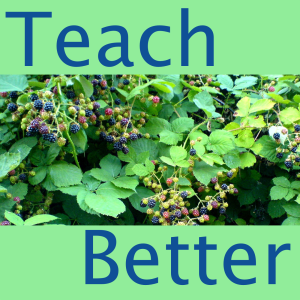
Podcast #54: Social Media and Teaching with Drew Margolin
 2017-05-16
2017-05-16
In this episode we are joined by Professor Drew Margolin from the Cornell Communications Department. Drew is an expert on the role of technology in communication and in particular social media. During our wide-ranging conversation he shares his thoughts on the growing importance of social media in our lives and our students’ lives, as well as how he uses Twitter to engage students in the classroom.
You can subscribe to the Teach Better Podcast through your favorite podcast app or simply subscribe through iTunes if you don’t have one yet.
Show Notes0:00 ⏯ Intro
0:39 ⏯ Introducing Drew Margolin. The importance of proper pronunciation.
2:27 ⏯ What’s so interesting about social media? Social media let us observe social communication on a large scale. Social media aren’t a proxy for social interaction: They are social interaction. Twitter gives us access to information before the news media have processed it.
8:47 ⏯ Social media conversations aren’t polite, but Drew’s research shows when people on Twitter are more likely to accept correction. People tend to part on good terms on Twitter. Drew’s new research focuses on the emotional tone of social media conversations. Doug suggests a ‘bot’ that downregulates anger.
14:17 ⏯ Drew teaches about Twitter, and many students have no experience with it. People don’t argue so much on, say, Instagram
16:55 ⏯ Teaching “Communication and Information Science” to 200+ students. Drew inherited the course structure but is continuously revising it.
23:05 ⏯ Drew tells us what students do on Snapchat. Why Twitter is interesting for analytical purposes.
28:21 ⏯ Social media is both the object of study and educational technology. Requiring students to use Twitter but letting them use an anonymous account, and using student communication in a lecture. Exploring tools and apps that many students (and even the professor) haven’t seen or used.
37:22 ⏯ Doug uses seven tools for classroom interactions, and Drew just uses one: Twitter.
41:12 ⏯ It’s hard just to get students on the same page. Helping students thinking critically about media: communication has dimensions, and Twitter lives in there. It’s very seductive to think that because we have access to more information that we know more. We may have more information, but we also seem to have less in common.
50:35 ⏯ How we use technology is procedural, but we often imagine that “knowledge” is declarative. Donald Norman’s The Design of Everyday Things. Should you worry about students knowing the conceptual nomenclature?
55:31 ⏯ Teaching mistakes? Remembering that however casual you want things to be, you are still the teacher, and words can sting. Being clear with students that you’re experimenting–and that future students will reap the benefit. Educational technology as applied research.
More Episodes
Create your
podcast in
minutes
- Full-featured podcast site
- Unlimited storage and bandwidth
- Comprehensive podcast stats
- Distribute to Apple Podcasts, Spotify, and more
- Make money with your podcast
It is Free
- Privacy Policy
- Cookie Policy
- Terms of Use
- Consent Preferences
- Copyright © 2015-2024 Podbean.com





